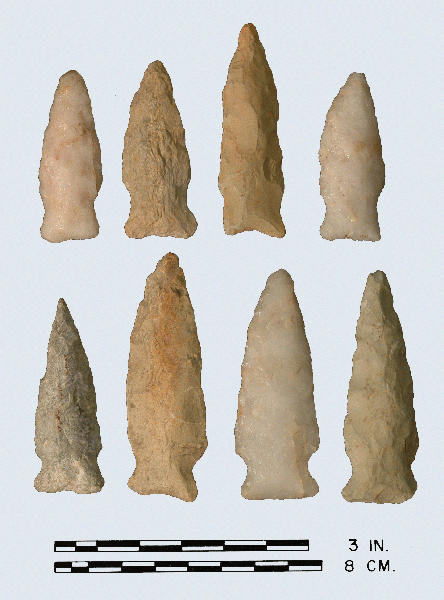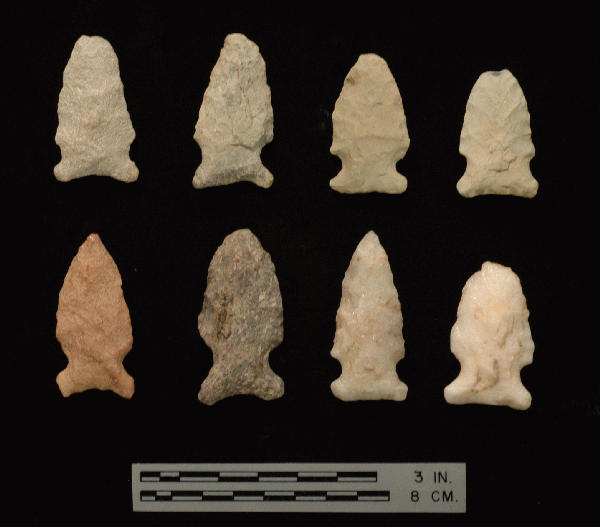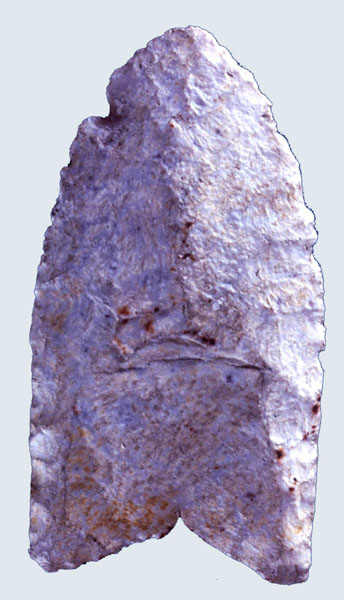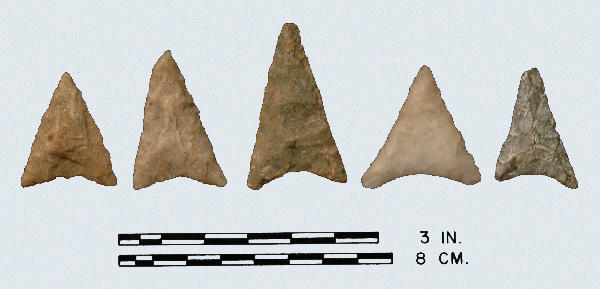Clagett: Top Row: quartz, rhyolite, tuff, quartz; Bottom Row: rhyolite, rhyolite, quartz, tuff.
Otter Creek: Top Row: quartzite, rhyolite, tuff, tuff; Bottom Row: quartzite, rhyolite, quartz, quartz.
Type Side Notched Middle-Archaic
Defining Attributes
The Clagett is a long, slender, thick point with pronounced shoulders, a constricted stem, and expanded, straight or concave base.
Chronology
The Clagett point dates to the Middle Archaic period, 4000 to 3000 BCE. The type has not been well-dated in Virginia or surrounding states.
Description
- Blade: The blade is typically an elongate triangle with straight or slightly convex edges, a sharp tip, and thick, lenticular cross section. Slight beveling occurs on some blades. Prominent shoulders separate the blade from the stem.
- Base: The base is straight or slightly concave and a few are slightly convex. The stem constricts sharply from the shoulders to the midpoint of the stem and expands sharply to a wide base. The stem is wider than it is long, and comprises 15 to 20 percent of the total length.
- Size: Length ranges from 43 to 89 mm with an average of 65 mm. Width ranges from 15 to 29 mm with an average of 22 mm. Thickness ranges from 6 to 13 mm with an average of 10 mm.
- Technique of manufacture: Moderately well made by percussion chipping.
Discussion
Clagett points are very similar in general shape to the Halifax point, except their size range is longer. Similar to the Clagett is the Otter Creek type defined by Ritchie (1961) and the late Big Sandy type from Tennessee. However, many of the Otter Creek and Big Sandy points have well defined notched and squared-off wide bases, while the Clagett type has a more generalized side-notched base. McAvoy (1997) Rowan point description (a term used by avocational archaeologists and collectors in Virginia and North Carolina) is similar to Clagett, and although undated, clearly falls into the late Middle Archaic period. McAvoy notes the similarity of the Rowan type to Halifax points.
Defined in Literature
Originally defined by Stephenson (1963) based on points recovered from the Accokeek Creek Site in Maryland.
References





